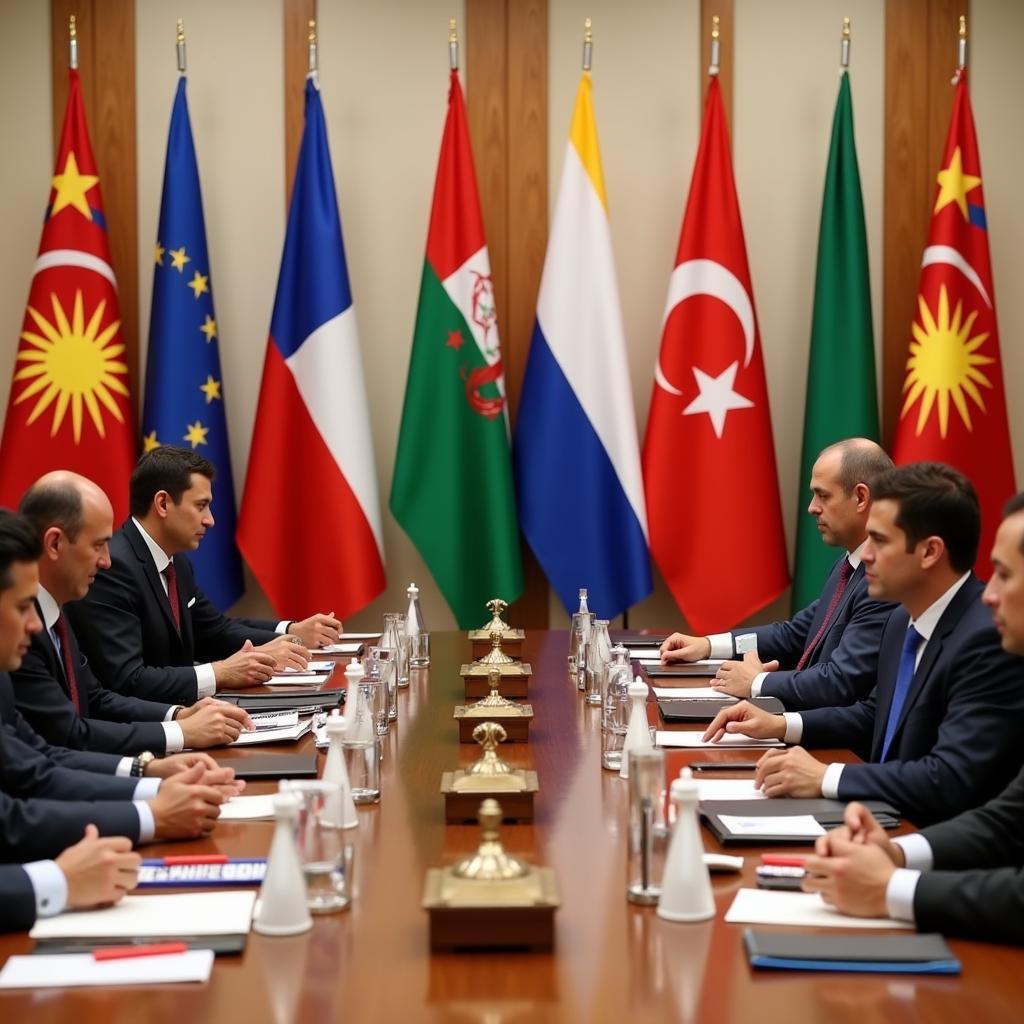The Association of Southeast Asian Nations (ASEAN) is a political and economic union of 10 member states in Southeast Asia. But what exactly are the two main goals of ASEAN? This article will delve into the core objectives that drive this influential organization, exploring its commitment to regional peace and economic growth.
Fostering Peace and Security: A Cornerstone of ASEAN’s Mission
One of the primary goals of ASEAN is to cultivate a region where peace and security prevail. Founded in the wake of regional conflicts, ASEAN recognized the critical need for collaboration to prevent future turmoil.
This commitment to peace is enshrined in the ASEAN Charter, which emphasizes the peaceful resolution of disputes and the renunciation of the threat or use of force. The Treaty of Amity and Cooperation in Southeast Asia (TAC) further reinforces this stance, fostering goodwill and peaceful coexistence among member states.
 ASEAN Summit
ASEAN Summit
Driving Economic Growth and Integration
Beyond peace and security, ASEAN is dedicated to promoting economic growth and integration among its member states. The organization recognizes that a strong and interconnected regional economy benefits all.
The ASEAN Economic Community (AEC) embodies this commitment, aiming to establish a single market and production base that facilitates the free flow of goods, services, investments, and skilled labor. This integration fosters a more competitive and dynamic economic environment, attracting foreign investment and driving innovation.
The Intertwined Nature of ASEAN’s Goals
While distinct, ASEAN’s goals of fostering peace and promoting economic growth are inherently intertwined. A secure and stable region provides a fertile ground for economic development. Similarly, increased economic cooperation reduces the likelihood of conflict and fosters greater understanding among nations.
ASEAN’s Enduring Impact
Over the years, ASEAN has made significant strides in achieving its objectives. The region has largely enjoyed peace and stability, creating a conducive environment for economic progress. ASEAN’s role in facilitating dialogue and cooperation has been instrumental in addressing shared challenges and promoting regional integration.
Conclusion
The two primary goals of ASEAN – fostering peace and security and driving economic growth – are fundamental to the organization’s vision of a prosperous and integrated Southeast Asia. By promoting dialogue, cooperation, and integration, ASEAN continues to play a pivotal role in shaping a brighter future for the region and its people.
FAQ
1. What are the 10 member states of ASEAN?
ASEAN consists of Brunei, Cambodia, Indonesia, Laos, Malaysia, Myanmar, the Philippines, Singapore, Thailand, and Vietnam.
2. When was ASEAN established?
ASEAN was founded on 8 August 1967.
3. Where is the ASEAN Secretariat located?
The ASEAN Secretariat is based in Jakarta, Indonesia.
4. What is the ASEAN Charter?
The ASEAN Charter, adopted in 2007, provides a legal framework for the organization, outlining its principles, objectives, and mechanisms for cooperation.
5. How does ASEAN promote economic cooperation?
ASEAN promotes economic cooperation through various initiatives, including the ASEAN Economic Community (AEC), free trade agreements, and infrastructure development projects.

